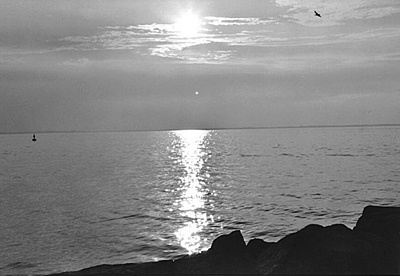All Nonfiction
- Bullying
- Books
- Academic
- Author Interviews
- Celebrity interviews
- College Articles
- College Essays
- Educator of the Year
- Heroes
- Interviews
- Memoir
- Personal Experience
- Sports
- Travel & Culture
All Opinions
- Bullying
- Current Events / Politics
- Discrimination
- Drugs / Alcohol / Smoking
- Entertainment / Celebrities
- Environment
- Love / Relationships
- Movies / Music / TV
- Pop Culture / Trends
- School / College
- Social Issues / Civics
- Spirituality / Religion
- Sports / Hobbies
All Hot Topics
- Bullying
- Community Service
- Environment
- Health
- Letters to the Editor
- Pride & Prejudice
- What Matters
- Back
Summer Guide
- Program Links
- Program Reviews
- Back
College Guide
- College Links
- College Reviews
- College Essays
- College Articles
- Back
Roman Emperors and the Pax Romana, 31 B.C.E. to 180 C.E
Suetonius’s take on “Twelve Caesars” discusses the Roman emperors and the Pax Romana era in Rome. After the assassination of the disliked Emperor Caligula (r. 37-41 C.E), came a more liked Nero (r.54-68 C.E), the better. With an army of 300,000 to 500,000 men guarding the long imperial frontiers, lead to great systems of paved roads linked with the provinces of Rome, and Roman ships that sailed the Mediterranean and Black seas. Across the Empire were cities built in Roman style with temples, public buildings, baths, schools, amphitheaters’, and triumphal arches. Their ruins are still to be seen all around the Mediterranean today beyond Italy, France, Spain, Portugal, England, North Africa, the Balkans, Turkey, and eastern Mediterranean showing evidence of their great Roman architecture (Bennett, 9).
Moreover, the Roman Empire was mostly influenced by Greek culture through religion, literature, art, and political institutions. Most wealthy Romans were bilingual in both Greek and Latin, and shared Greco-Roman culture that spanned throughout The Mediterranean, Asia Minor, and North Africa. Unfortunately, life for the lower class of Rome mostly lived in farms and villages instead of cities. They also only spoke their native language, followed their local customs, worshipped their traditional deities, and pledged loyalty and large taxes to Rome. Expansion to the east was halted by a new aggressive Persian Empire and expansion through the Mediterranean Basin was halted by rough terrain. In brief, the Roman frontiers relatively took over all the land that could be reached by the Roman armies and cultivated profitably by Roman landowners. During the Pax Romana, institutions and classical culture of Rome spread throughout the empire. By the time of Caesar Augustus, Roman citizenship was extended more and more throughout provinces eventually leading to every free inhabitant under the Empire citizenship, in (212 C.E.). Shortly after, Roman emperors themselves came from these provinces. The talented second-century emperors Trajan (r. 98-117 C.E.) and Hadrian (r. 117-138 C.E.), for example, were born in Iberia rather than Rome. Furthermore, most cities had no more than 5,000 inhabitants; however, size did not matter, for even small cities played huge roles in the Roman’s administration. A provincial city governed its surrounding countryside, so that wealthy citizens from a small city acted as agents of Rome, administrating its edicts, emulating its traditions, and collecting taxes from the lower-class citizens. Thus, concentrating power in the hands of the Roman elite who controlled one-third of the Empire’s goods and lands (Bennett, 11).
Roman agriculture was not all that great, as it was mainly composed of grain, grapes, and olives. As a result, their diet consisted of bread, whine and olives. Roman slavery at the time was horrendous, although not race-based almost any person might be enslaved if captured in war, abandoned by parents, or even sold to pay debts. Most slaves in fact, worked in agriculture, but others labored as household servants or in manufacturing. If that wasn’t bad enough, under Roman law, slaves could not marry or form families and usually was a slave till death. During the decline of Pax Romana, the flow of war captives dwindled, and the supplies of slaves lessened too. Landowners began to sell their land to sharecroppers’ who were later classified between slave and free statuses. Moreover, the Roman Peace, centered on small administrative cities, which relied on laborers who worked in farms, and was greatly weakened after prospering for two centuries. Under less favorable leadership, Barbarians were able to push through imperial frontiers, which impacted towns and estates deep within the empire causing ‘violence and mayhem’ to earlier historians. This can be through the result of, the Roman provinces being through a lack of government and army present. (Bennett, 12)
In conclusion, life during the Pax Romana was said to be a peaceful and prosperous time in Rome. But was it truly peaceful? For the most part, no. Although Rome wasn’t fighting any wars, they still went through Civil Wars from 27 B.C.E.-180 C.E. The positive aspects of Pax Romana stemmed from trade through the silk road with China, the expansion of cities throughout Europe, Asia Minor, and Northern Africa. And the increase of population through declaring anyone conquered under the Roman Empire a Roman citizen. This totaled to about 60-80 million people. The negatives of the Pax Romana were that 90% of their population were unemployed or poor farmers, there was never a surplus of food due to a large army, the ownership of slaves, women turning to prostitution due to not being able to find jobs, and the slaughtering of about a million Jews due to refusing to worship Roman Gods. (Dulberg, 1)

Similar Articles
JOIN THE DISCUSSION
This article has 0 comments.
